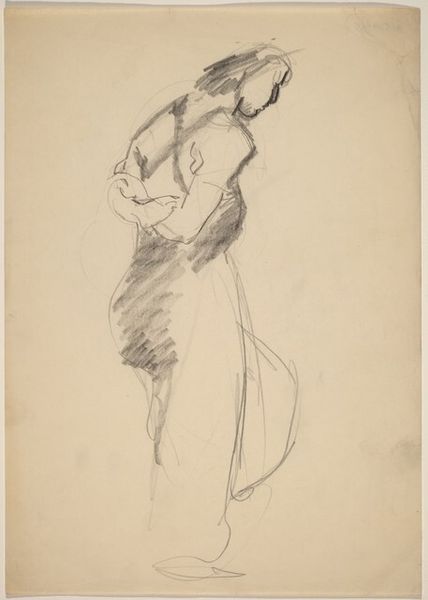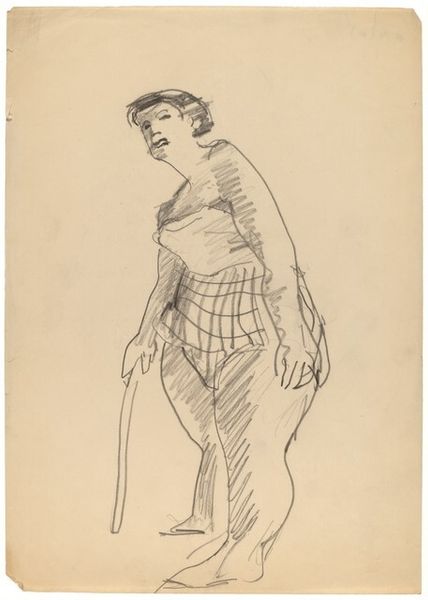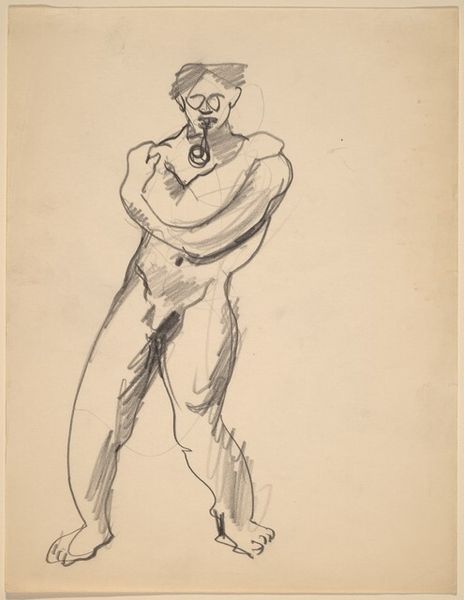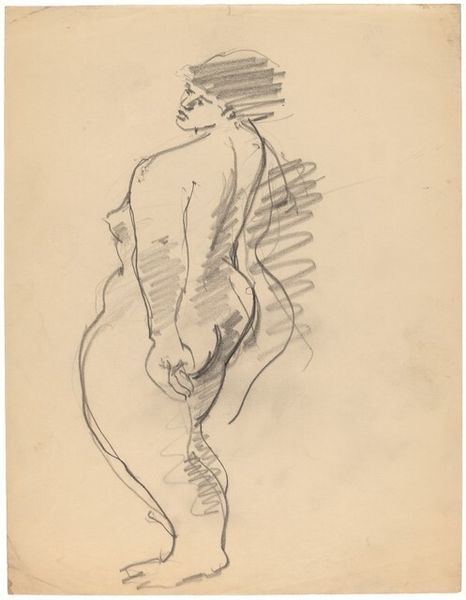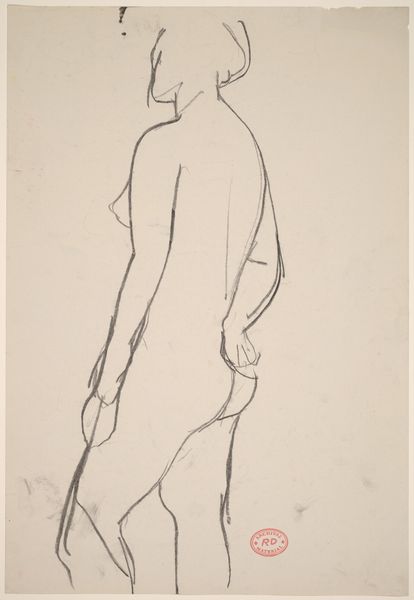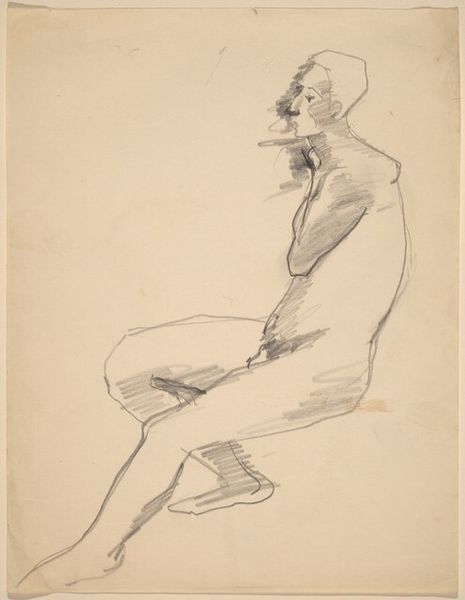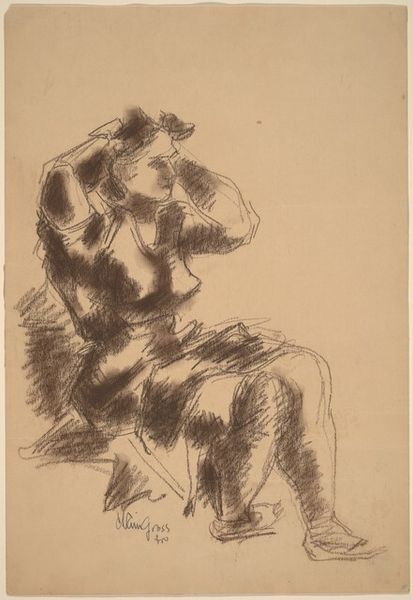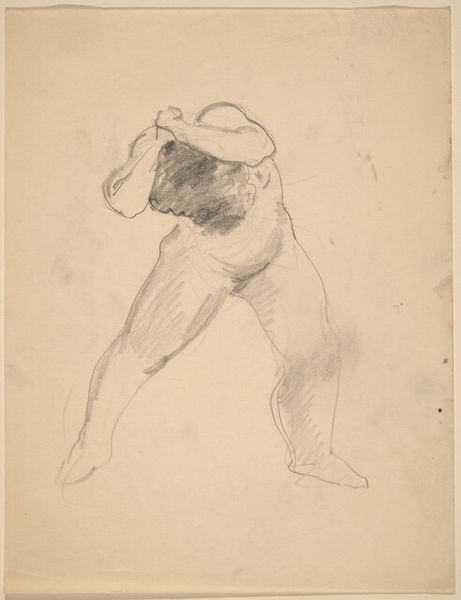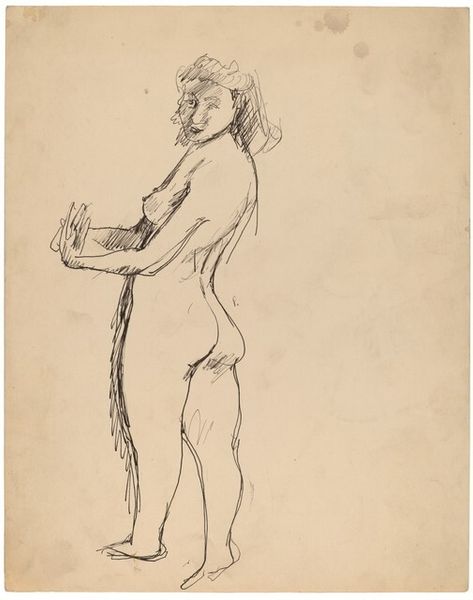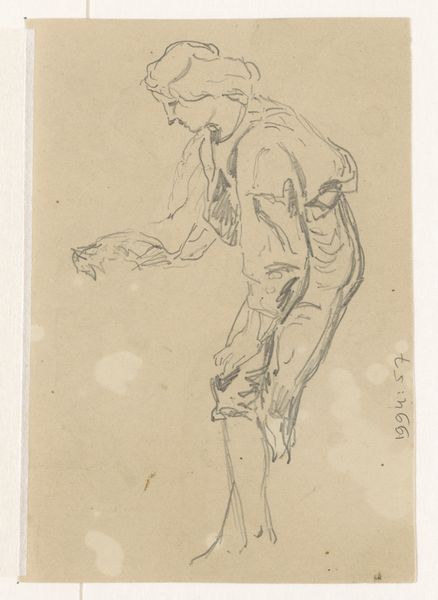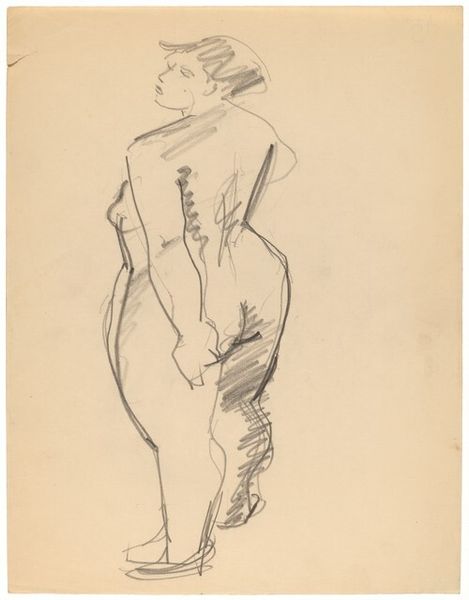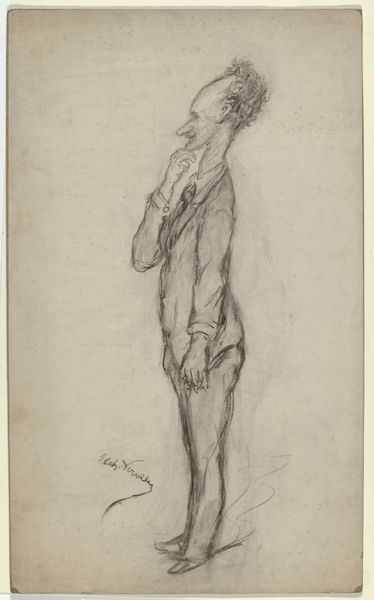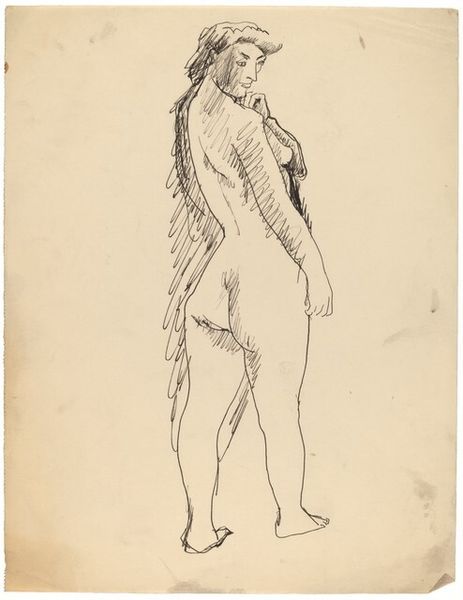
Standing Nude, Three-quarter View from the Back, Right Arm Extended
0:00
0:00
drawing, ink
#
portrait
#
drawing
#
ink drawing
#
figuration
#
ink
#
nude
Copyright: National Gallery of Art: CC0 1.0
Editor: We are looking at a work titled "Standing Nude, Three-quarter View from the Back, Right Arm Extended," an ink drawing by Mark Rothko. It's such a simple, almost stark, portrayal of the figure. How do you interpret this work within a historical context? Curator: That starkness is interesting, isn’t it? We often consider Rothko within the Abstract Expressionist movement, renowned for monumental canvases saturated with color meant to evoke emotion. Yet, this drawing pulls us back to his earlier figurative work, pre-dating the signature blocks of color. In the 1930s and 40s, social realism and concern with the human condition dominated much of the art scene. This nude, then, can be seen as Rothko engaging with contemporary themes. The question, though, becomes what he is trying to say with it. Editor: So, it's not just about the aesthetic portrayal of the body, but also a reflection of broader social themes? Is he making a statement about the role of women at that time? Curator: It's less directly a statement, perhaps, and more about participation. Consider the era. Rothko and his contemporaries were grappling with economic hardship, war, and societal upheaval. Figuration, and especially the nude, provided a readily understood visual language. It becomes crucial to question how Rothko employed this language to reflect or challenge existing cultural values related to representation, particularly given the history of the female nude in art. Is it objectification? Empathy? Something in between? Editor: I see. It’s interesting how the same artistic language can be interpreted differently based on historical context. I assumed that coming from someone mostly known for his Abstract Expressionism it was merely a study. Curator: Exactly! Understanding the social and artistic backdrop allows us to appreciate the layers of meaning that might be present in this deceptively simple drawing. It certainly gives us a new appreciation to contextualise it and interpret a fresh perspective to his later works. Editor: Definitely. Thinking about its original context really reframes the work. I had not thought that the socio-political landscape would contribute to his non-figurative paintings in the years that followed. Curator: Right? It shapes the whole legacy.
Comments
No comments
Be the first to comment and join the conversation on the ultimate creative platform.
